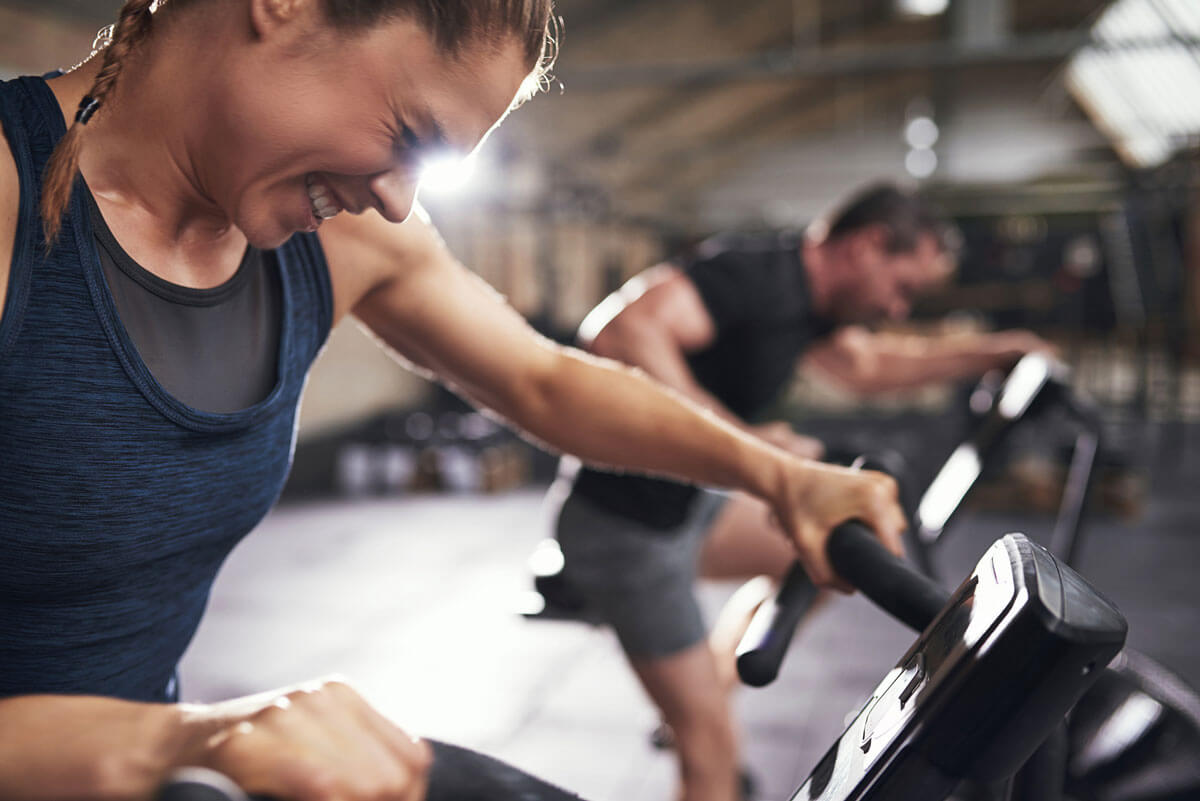Many gym-goers are repeating the words "No Pain No Gain" as a mantra - referring to their training. Believing that pain means progress, they train hard despite the feeling of discomfort.
Does it really work?
This question cannot be answered with the simple "yes" or "no". In fact, if during and after physical exertion you feel pain and continue to exercise despite the clear signals sent by your body, you may experience injuries, which in the long-term will delay your training effects.
What is pain?
Initially, we should define the basic concept, so that you know when you should stop the training or not start another training unit.
Pain is often described as a strong, stabbing or pulsating sensation. It can be located deep in the muscle or concentrated in the joint. It often occurs due to poor exercise technique and inflammation. Pain is a warning signal of the body, not a measure of the effectiveness of training.
Every person who practices in the gym, observing the exercise regimen, should remember that pain is not necessary for the training to bring results. Undoubtedly, there may be initial discomfort when starting any exercise, especially when you are a beginner and your body develops new movement patterns. However, this discomfort should gradually disappear over time as the muscles and joints adapt to the intensity of training.
Very sore muscles after training should also not be underestimated. Very hard training or the introduction of a new training plan can cause the formation of muscular doms (delayed onset muscle soreness), commonly called "sourdoughs". If your muscles are very sore, avoid intense workouts. Give your body enough time to regain strength and only return to training when fully regenerated.
When can you train?

Muscle soreness, in contrast to pain, will almost always subside after a good warm-up and mobilization. The aching muscles are a natural process of adaptation to training, they will accompany you especially at the beginning of your adventure with the gym.
Let's look at how to understand the saying "No Pain No Gain" in three thematic areas:
1. Fat reduction
If your goal is to lose weight, first you need to take care of the negative energy balance. Simple rule: If you burn more calories than you consume, your weight will go down. That's why the best training sessions are those where the biggest calorie burning occurs. A good way will be to include short intensive training units as well as whole body trainings, including multi-joint exercises. Although it is true that intervals, explosive exercises requiring maximum use of force will help you burn fat, you certainly do not have to force yourself to exceed the threshold of pain.
2. Strength training
Saying "No Pain No Gain" is especially popular in strength training. There is some truth in it when your goal is to build muscle. In general, your body requires a training stimulus large enough to make your body adapt. In other words, you must move the body out of the comfort zone (homeostasis) to start the adaptation process. If you do one pump a day, you will not properly stimulate your muscles to grow. The training stimulus will be too weak. However, if you perform strength training optimally from two to four times a week, over a longer period, it will be enough to stimulate your muscle mass. Experienced athletes often exercise up to muscular collapse and thus optimize adaptation processes. However, they additionally ensure that their muscles have enough time for recovery before the next session of strength training. Exercises for complete muscle failure are effective but are recommended only for experienced people. Remember also that the pain changes the way you move, and the technique breaks down. This is the subconscious endurance of the body to protect yourself from injury. Instead, you should concentrate on the correct technique of exercise. If you are unable to do the exercises correctly or you feel pain during the training, you should immediately end the training unit. This way you will avoid injury and exclusion for a long time from training opportunities.
3. Stretching
Stretch until you feel a mild tension. Under no circumstances should you feel pain. Rapid, fast dredging causes a defensive reaction in the muscles and the emergence of tensions as well as pain. Therefore, it is not allowed to make jerky movements. Stretching of the muscle should take place slowly, considering the proper breathing and tightness to the tissues. Before training, stretch dynamically. If you start feeling tired, go to the next stretching exercises. Muscles can lose flexibility and flexibility because we will shorten the length of muscles regulated by the nervous system. After training or during the day for regeneration, enter static stretching.

In conclusion, the saying "No Pain No Gain" refers only to exceptional situations and applies to athletes. Although it is generally true that hard training is required in most areas, pain should always be avoided. Train at 100%, but your possibilities. It is important that you listen to your body and do not ignore signals such as pain. This treatment will minimize the risk of injury and will accelerate the achievement of your training goals.




